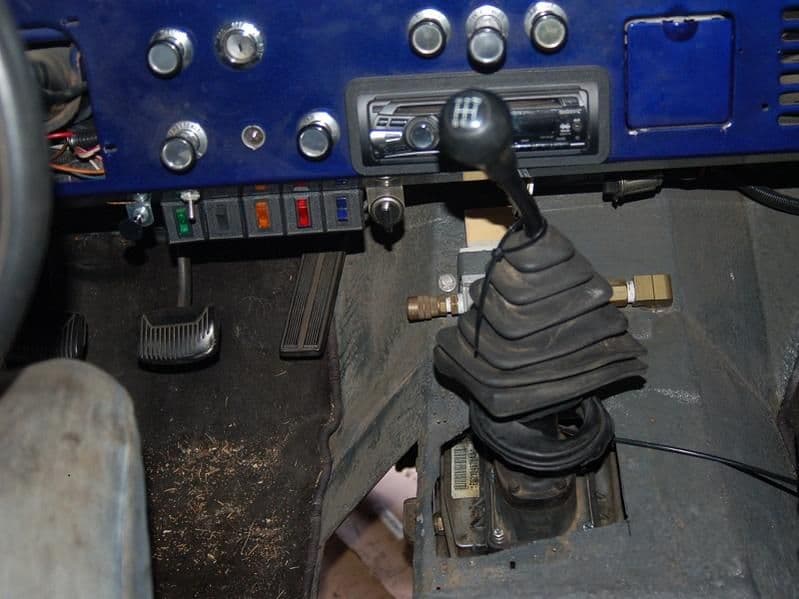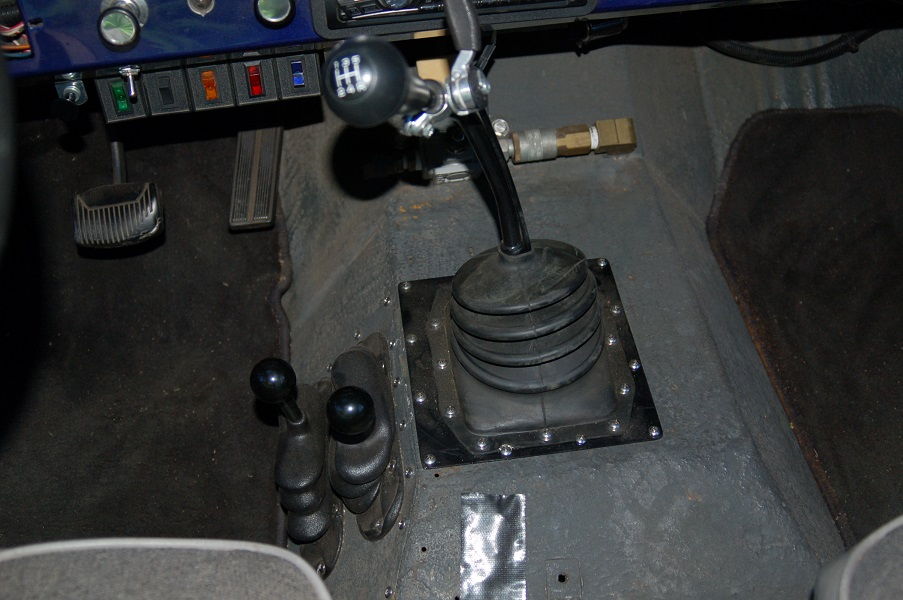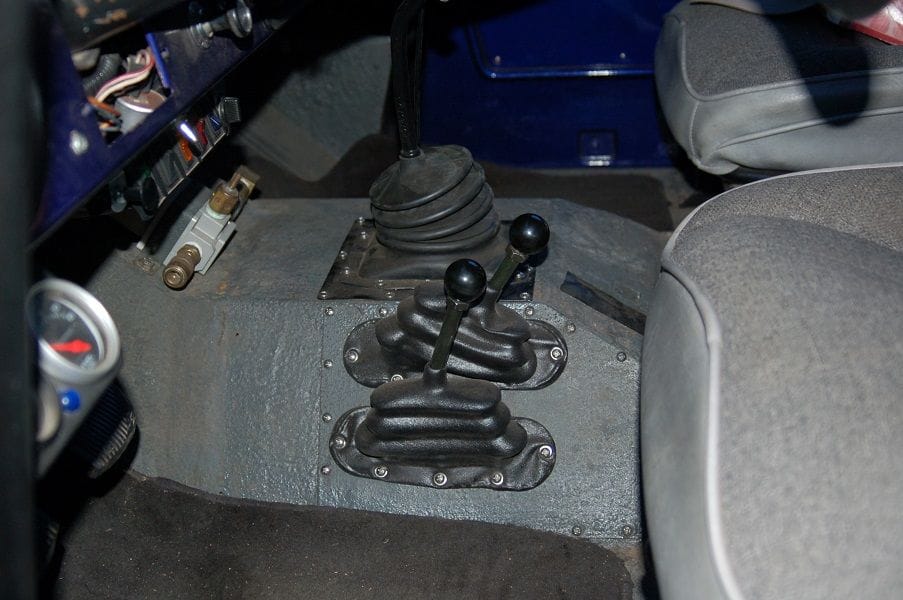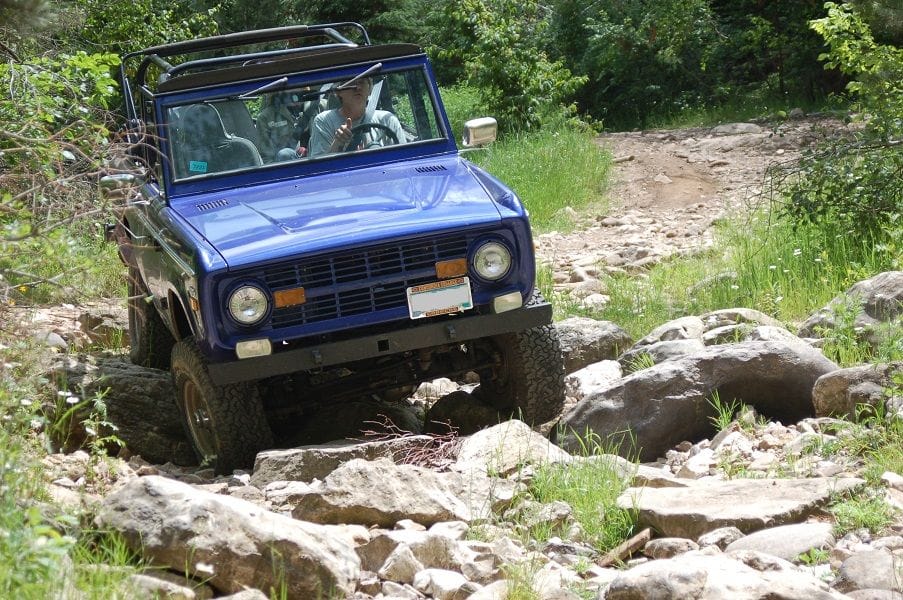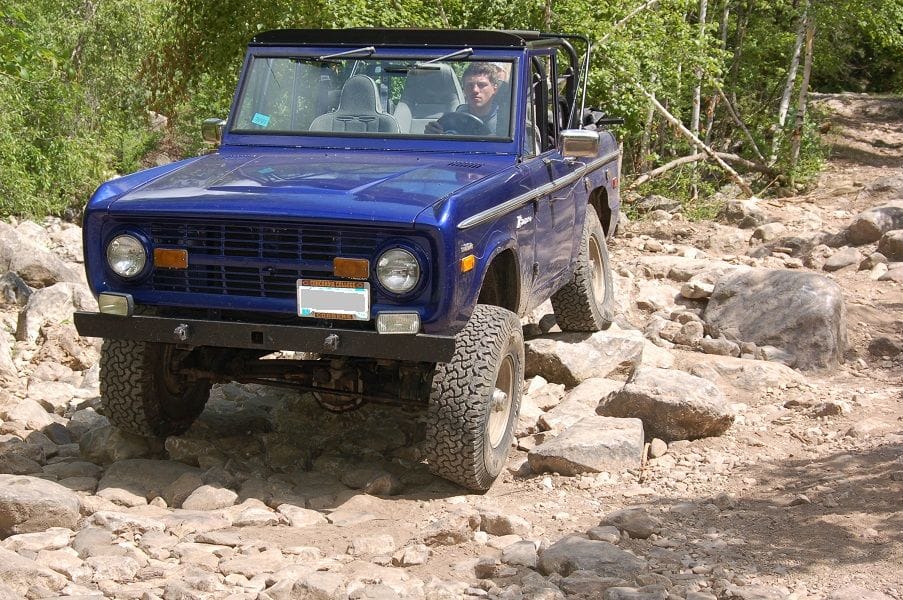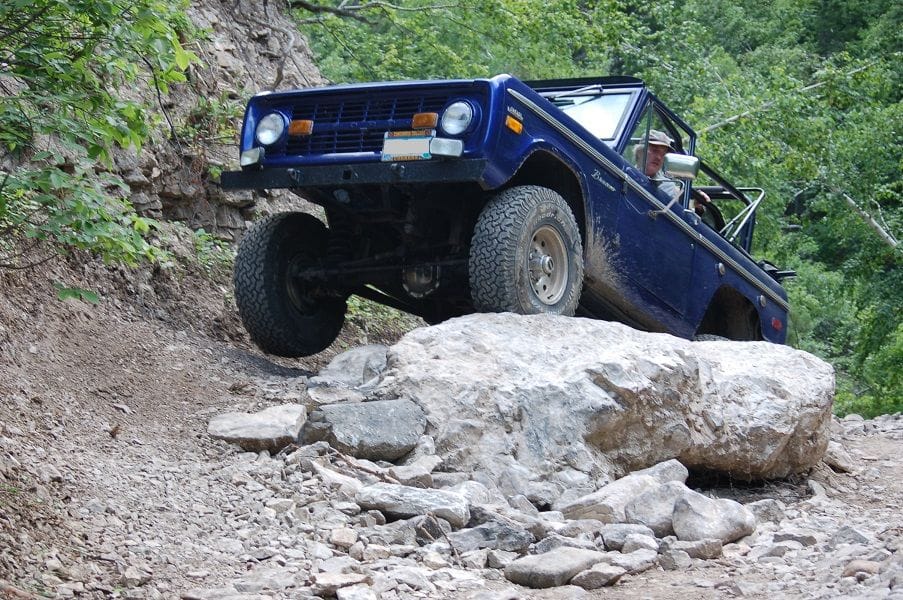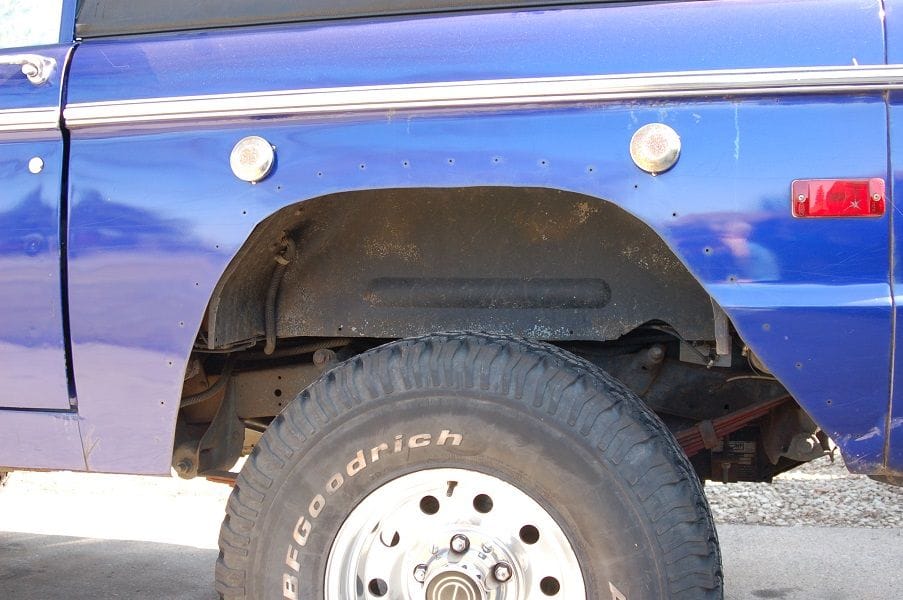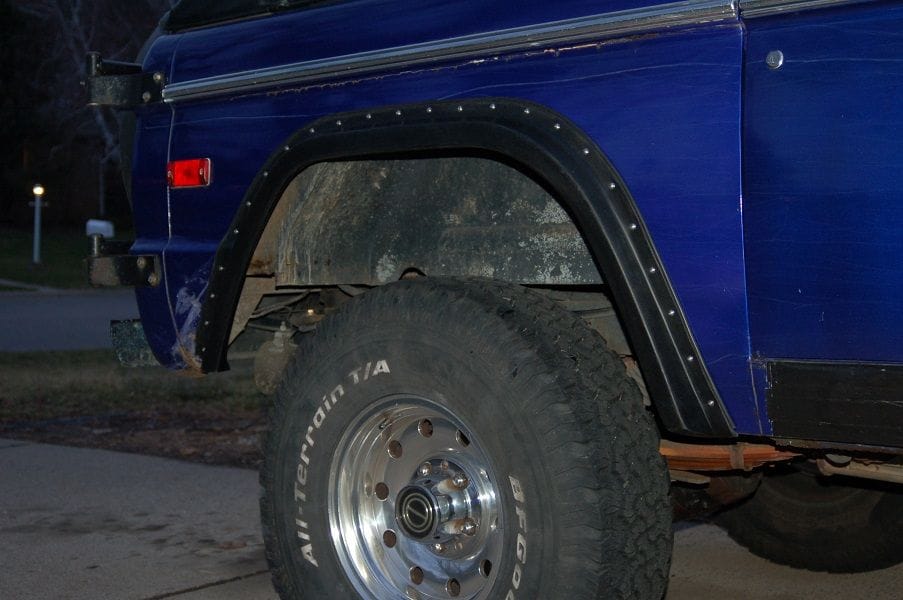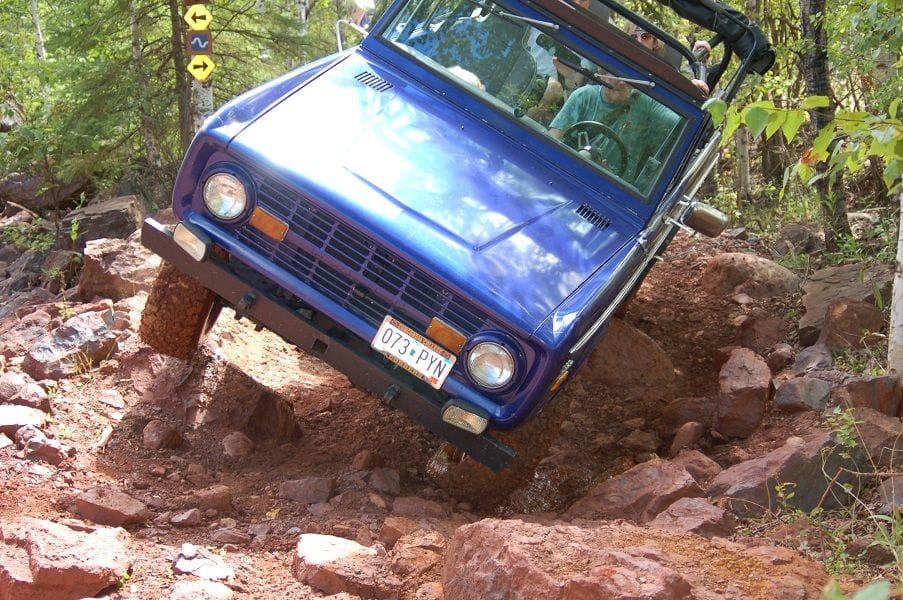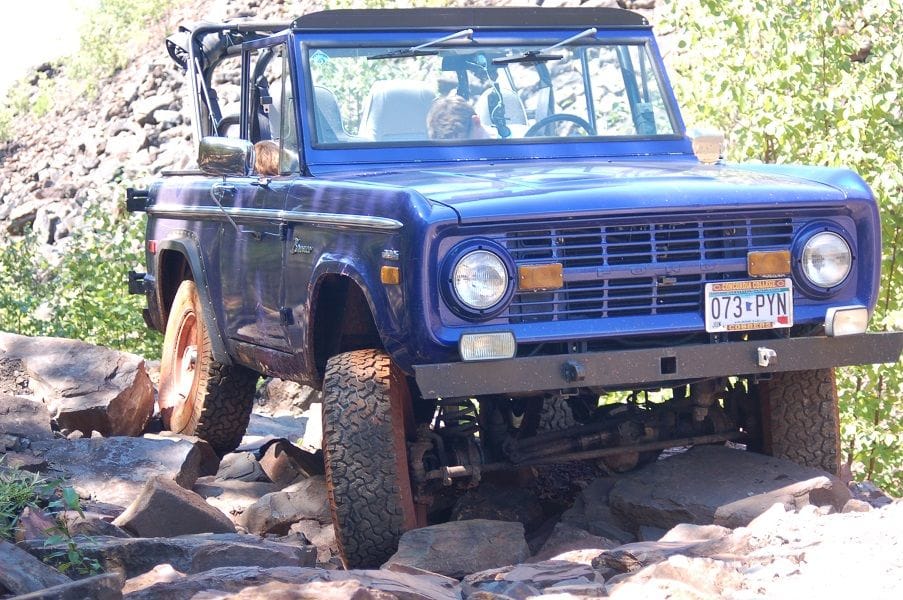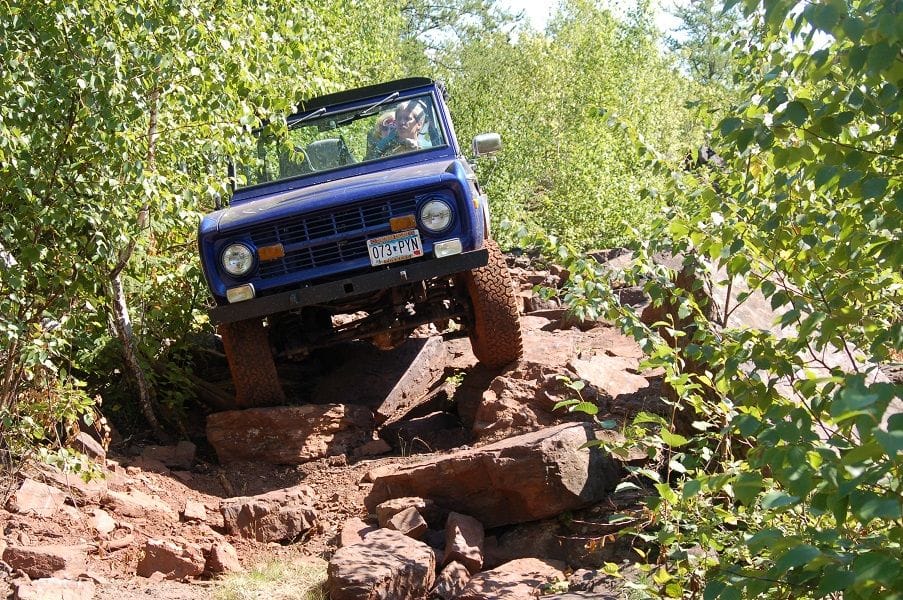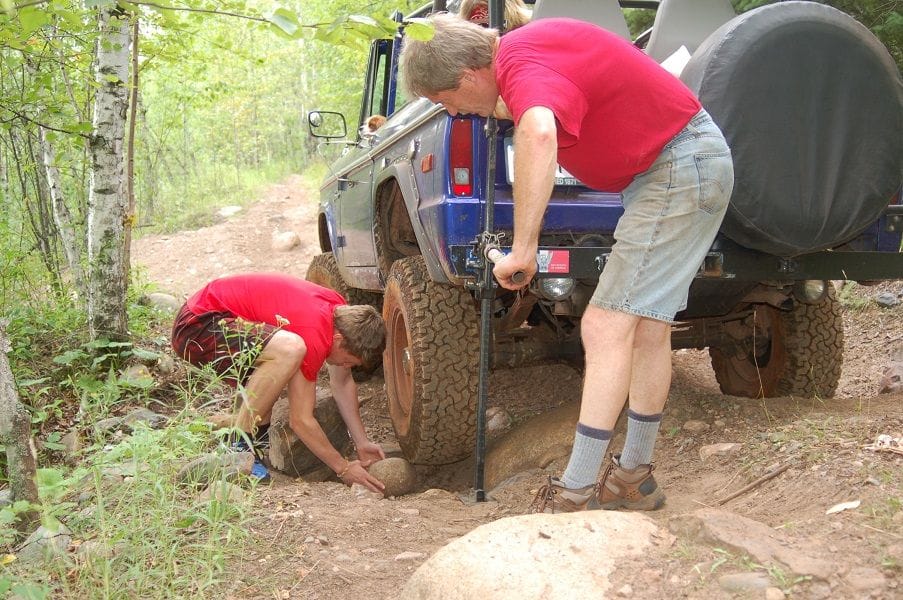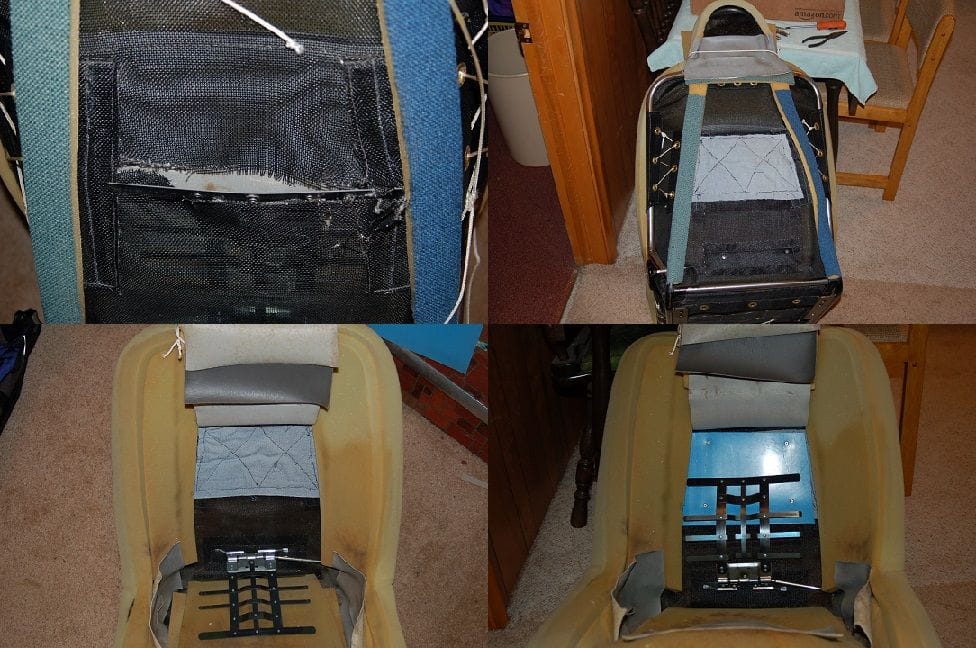Manual trans - 2009
As cool as the manual valve body was, the auto trans had to go. Overheating was the biggest issue. I knew I could upgrade the cooling system, but getting rid of the heat generated by the trans would go a long way. And the lack of compression braking was the clincher. OK for normal driving, but completely unacceptable off-road.
Still trying to save money, I decided to stick the original 3 speed back in, at least for then (as already noted, an NV3550 eventually found its way in). I hadn't junked the trans or the previous owner’s floor shifter conversion, but I had lost the bellhousing, flywheel and most of the clutch linkage with the original engine. I found a junkyard Bronco that could donate most of what I needed, so after a long, cold Minnesota winter day in a junkyard I was ready to start "downgrading".
The only issue I had reinstalling the trans was that the replacement engine didn't have one of the bosses for the clutch linkage. After staring forlornly up at it from a creeper for a while I figured out a way to tie the missing mounting point into the bellhousing. It's not as solid as the original, but it's plenty strong in the direction it needs to be.
The jerry-rigged clutch link mount was tough to get a picture of, but here's a bad one. This picture is taken looking straight up from a creeper. The bolt that the green arrow points to is pointing straight to the left.
I started with a piece of thin angle iron, I think from an old bed frame. The lower end is attached with one of the bolts that holds the thin sheetmetal access cover to the lower front of the bellhousing. The top end provides a mounting point for one end of the bellcrank in the clutch linkage. I had to run the bolt "the wrong way" through the bellcrank mounting hole because there wasn't room for the nut where the boss was supposed to be.
The bracket does nothing to keep the bellcrank moving side to side, but other mounting points on the bellcrank hold it in that direction. And it does very little to keep it from moving front-to-back, but again, other points take care of that. The only motion it really stops is up and down, and that's what was missing.
The other issue was that once it was all back together I had a pretty noticeable vibration. Turned out that the engine I got the flywheel from (as well as all older 302s apparently) was "externally balanced" while my rebuilt engine was "internally balanced". The correct flywheel, along with another new clutch (the other new clutch didn't line up with the holes in the new flywheel) and I was running smooth again.
Obviously I wish I'd never done the auto trans to begin with. If I hadn't I'd have a NV4500 and an Atlas in it and I'd have spent less overall than I did. But given my bad start, I was happy with this temporary step. I had compression braking again and the overheating issues were all but gone.
The big issue that it pointed out was the shortcomings of my engine. The original engine could pull away from corners in 3rd gear, but I needed to drop to 2nd now. That's just a symptom though, the problem was rock crawling. I didn't have low enough gears to go slow enough without stalling the engine. I had the same crawl ratio that my Jeep had, and that would go a lot slower with its 258 inline six idling. It makes me wish I'd have gone with a 351 instead.
I wasn’t thrilled with the gearing at high speed either. Long freeway drives with the 4.10 gears could sure use an overdrive. But this was fine for around town driving and it was good enough until I saved up the money for an NV3550 and an Atlas.













